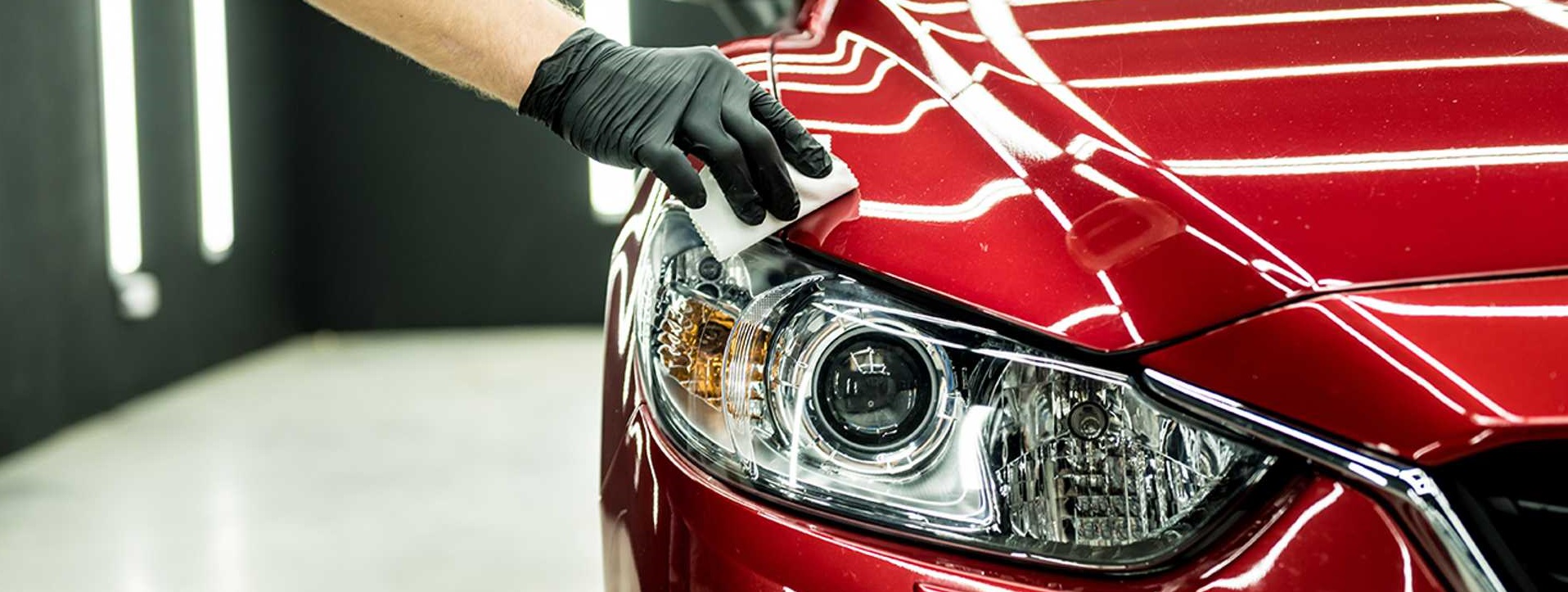Advanced Modern Technology Behind Ceramic Coating Philadelphia for Ultimate Protection
Advanced Modern Technology Behind Ceramic Coating Philadelphia for Ultimate Protection
Blog Article
Why Ceramic Layer Is the Ultimate Solution for a Remarkable Finish
Ceramic finishing has arised as a leading remedy for those seeking a remarkable coating for their automobiles, thanks to its impressive toughness and protective functions. What factors absolutely established ceramic covering apart?
What Is Ceramic Coating?

When used appropriately, ceramic finish creates a hydrophobic surface area that repels water and dirt, making it less complicated to preserve and cleanse. Unlike traditional waxes or sealants, which generally use short-lived defense, ceramic finishes can last for several years, depending on the product high quality and application approach. The procedure of using ceramic layer requires meticulous preparation, including complete cleaning and often repaint correction, to make certain ideal bonding and performance.
Ceramic coverings are not restricted to vehicle surfaces; they can additionally be made use of on numerous materials, including glass, metal, and plastics, giving a flexible solution for improving protection. Overall, ceramic finishing stands for a significant development in surface area protection innovation, integrating both practical and visual benefits for a large range of applications.
Advantages of Ceramic Layer
While numerous surface defense options exist, the advantages of ceramic finishing stick out because of its one-of-a-kind buildings and lasting efficiency. One of the key benefits is its phenomenal resilience. Ceramic Coating Philadelphia. Unlike conventional wax or sealers that call for regular reapplication, ceramic layers offer a resilient layer that can last for several years, substantially lowering maintenance efforts
One more notable advantage is boosted security against environmental impurities. Ceramic coatings develop a hydrophobic surface area that wards off water, dust, and numerous pollutants, making it simpler to clean. This feature not just protects the vehicle's appearance yet also lessens the threat of corrosion and oxidation, specifically in rough weather problems.
Furthermore, ceramic coatings offer remarkable resistance to UV rays, stopping fading and degradation of paint gradually. This UV protection is vital for maintaining the visual value of surface areas and cars exposed to guide sunlight.
In addition, the glossy finish attained with ceramic covering enhances the overall visual allure, providing surfaces a showroom-quality sparkle. Overall, ceramic coatings represent a considerable improvement in surface security innovation, providing long-lasting advantages that satisfy both functional and visual requirements.
Just How It Works
Understanding the scientific research behind ceramic coatings discloses exactly how they supply such impressive security and durability. At its core, a ceramic layer is a liquid polymer that chemically bonds with the vehicle's factory paint. This bonding creates a safety layer that is both oleophobic and hydrophobic, repelling water, Home Page dirt, and oil. The main element of many ceramic coverings is silicon dioxide (SiO2), which is acquired from quartz. This compound contributes to the finish's hardness and resistance to scrapes, UV rays, and environmental pollutants.
The application process includes multiple actions, including surface preparation, which is essential to achieving optimum attachment. As soon as used, the finish goes through a treating procedure, during which it hardens and reference creates a semi-permanent bond with the paint surface. This bond is what differentiates ceramic layers from typical waxes and sealants, supplying a longer-lasting safety obstacle that can endure for several years.
Furthermore, the thickness of the coating can enhance its safety qualities, making sure that it can withstand severe problems. Eventually, the science of ceramic coatings incorporates sophisticated products with innovative application strategies to provide an exceptional level of defense and visual enhancement for lorries.
Contrast With Traditional Approaches
When contrasted to traditional paint security methods such as sealers and waxes,The advantages of ceramic coatings come to be particularly noticeable. While waxes use a short-lived luster, commonly lasting a couple of weeks to a number of months, ceramic coatings supply a resilient safety layer that can sustain for several years. This sturdiness substantially minimizes the frequency of reapplication, making ceramic finishes a more economical option in time.
Furthermore, traditional methods often call for comprehensive preparation and multiple applications to attain an acceptable level of security. In contrast, ceramic coatings bond at a molecular degree with the automobile's surface area, linked here developing a robust shield against environmental impurities like UV rays, acid rainfall, and road salts. This bond improves the lorry's resistance to scratches and swirl marks, which prevail with conventional waxes and sealers.
Moreover, the hydrophobic properties of ceramic coverings push back water and dust, bring about less complicated cleaning and maintenance. On the other hand, wax and sealant-treated surface areas can attract grime, demanding even more regular cleaning - Ceramic Coating Philadelphia. On the whole, ceramic layers not just offer superior security however also supply a more enduring and visually attractive surface, developing them as the preferred option for critical automobile owners
Application and Maintenance Tips

Making use of a foam applicator, use the finish in small sections, adhering to the maker's guidelines regarding thickness and overlap. Permit adequate treating time between layers, normally 1 day, to guarantee correct bonding. After application, it is essential to stay clear of exposure to water or extreme components for a minimum of a week to enable the finish to fully treat.
For upkeep, wash the automobile frequently with pH-balanced soaps and prevent abrasive products. Touchless automobile washes are advised to minimize scraping. Additionally, using a ceramic upkeep spray can improve the layer's hydrophobic properties and longevity. Routine assessments for any indicators of wear will aid keep the finish's honesty and protect that excellent coating.
Verdict
Finally, ceramic covering becomes a remarkable alternative for attaining a perfect automotive finish. Its outstanding longevity, protective high qualities, and hydrophobic homes considerably improve the car's look while streamlining upkeep efforts. By creating a robust bond with factory paint, ceramic covering efficiently shields versus scratches, UV rays, and ecological impurities. With a life expectancy extending several years, this advanced solution not just maintains however additionally boosts the general visual appeal of vehicles, making it an affordable financial investment for cars and truck lovers.

Report this page